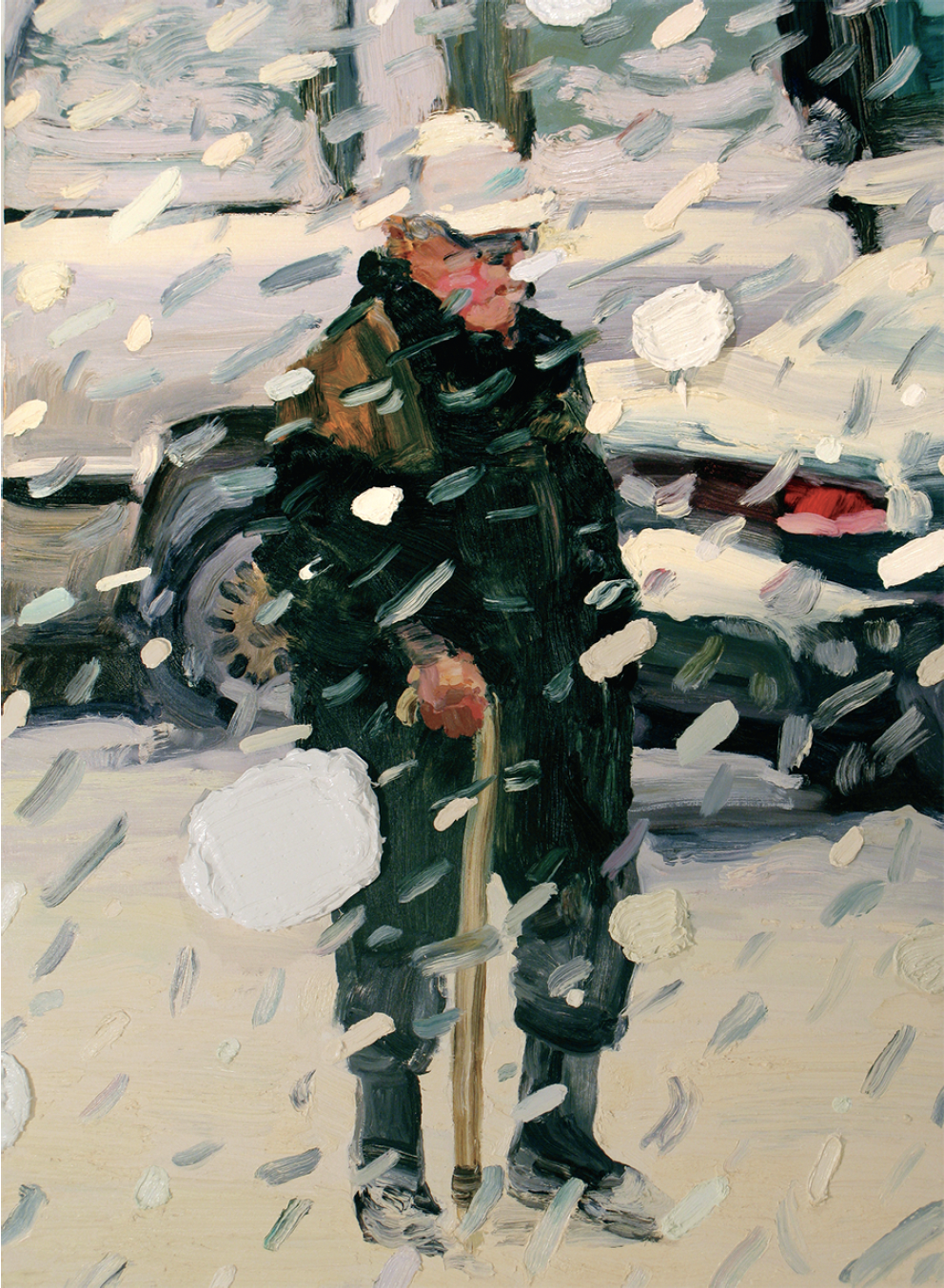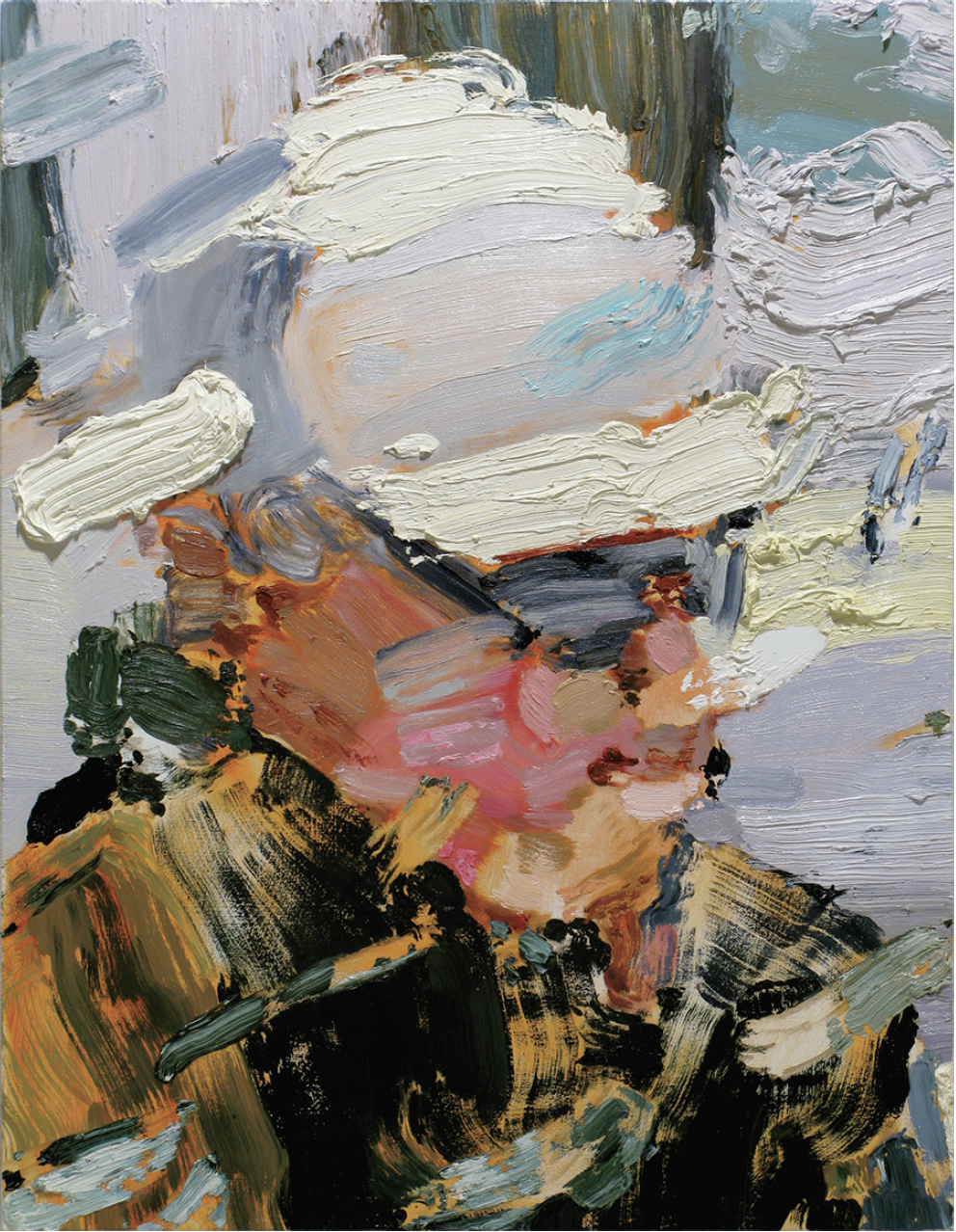Ben Reeves
Despite the current fashion for young painters who perform bold, hollow gestures of critical vacancy and who punk-rockishly revel in their anti-intellectual emptiness, Ben Reeves is one among them who has made some really smart paintings. These works forensically investigate the substance of their own authenticity. His obsessive and labour-intensive practice of faithfully reproducing large versions of smaller, more immediately painted maquettes, complicates his work’s relationship to the viewer. The most obvious reading of this self-referential production strategy is to see his works as critique, parodies of the wildly prevalent, Peter Doig-inspired, transgressive Canadiana that draws the bulk of its praise for the ingenuity of its mark making and brushwork. More importantly, however, this critique also calls to question the authenticity of the earlier models with which these works implicitly conduct a dialogue: Canadian Impressionism and, especially, the Group of Seven. The ultimate consequence of this critique not only questions the notion of the artist’s mark as a sign of intense individualism but, in the case of the Group of Seven, as a sign of nationalism and cultural identity as well. Although this is certainly a valid reading, because these works might, in fact, conceptually do that, it is also a simplistic one because it disregards what, as objects, they actually do in the world. They are beautiful things. They glop and slop with a freshness that is deeply satisfying. Like a contemporary dancer who understands and examines the intricate nuances of every movement of their body, the rehearsed choreography of Reeves’s paintings has a rare sense of physicality and presence. In work that inherently exhibits a sense of critical self-awareness, he maintains all the gumption and vigour of first-rate, capital “P” painting. His exhibition “Elements,” on view at Equinox Gallery in Vancouver, gave us the smallest taste.

Ben Reeves, Cane, 2008, oil on canvas, 60 x 44”. Courtesy the artist and Equinox Gallery, Vancouver.
The 60-by-84-inch canvas Tracks is, to my mind, the finest work on display here. Thick, black tire tracks dilute into muted greys and purples as they ascend diagonally backwards towards the panel’s top right-hand corner. They are gouged wet-on-wet into a creamy, yellow-light, snowy ground that cools, lowering its intensity as it recedes back into this clearly definable space. This ground is applied east to west, maintaining a shiny, brushy uniformity with a consistency similar to homemade butterscotch pudding. It sits on top of a turp-thinned, burnt sienna underpainting that is left faintly exposed along some of the frame’s edges. This is the end of a warm day in winter. The litter of grey-blue footprints is marked by small, jabby gestures that indent and scarify his landscape just as footprints do in the actual landscape to which his gestures refer. The alchemy of this painting, like all the other works shown here, is impressive. They look like they’re still wet, like the inevitable skin that covers thick oil paint has yet to be formed, and that their gooey life will go on forever.

Ben Reeves, Cane Detail, 2008, oil on canvas, 36 x 28”. Courtesy the artist and Equinox Gallery, Vancouver.
Perhaps as a tonic to the lyrical beauty of Tracks, Cane and Cane Detail are placed side by side on the opposite wall. These works reveal the other side of Reeves’s painterly nature. Cane is a 60-by- 40-inch panel that depicts an old man standing with a cane in the middle of a blizzard. (The blizzard is a recurring motif in Reeves work.) Two gigantic and humorously thick blobs of white paint invade the scene, like snowballs tossed by an unseen assailant. The elderly gentleman in the canvas is seemingly unprepared for such a bombardment, despite the fact that one of these infantile projectiles seems to be whizzing directly past his face. The true knee-slapper of the two works, however, is Cane Detail. This is a smaller, but nearly mark-for-mark replica of the portrait segment of Cane. Reeves’s personal lens has zoomed in on his subject with the mark making of Cane made larger and thicker. The title of the piece cleverly refers to the practice of artists taking detail shots of their work for reproduction. In fact, when looking up these images on the Equinox website, it is difficult to discern that Cane Detail is an actual painting unto itself and not merely a close-up reproduction of the larger, original work. Reeves has included, however, a small one-of-these-things-doesn’t-belong/ Where’s Waldo moment of revelatory difference: the old man in Cane Detail seems to be wearing a yellow and black plaid scarf. The other Cane is not. Rather than merely being a clever joke, however, Cane Detail is really the key work in unwrapping the unorthodoxy of Reeves’s conceptually sophisticated methodology. “Elements” is an important collection of works. The authenticity of painting breathes deeply beneath their dried skins. ❚
“Ben Reeves: Elements” was exhibited at Equinox Gallery in Vancouver from October 15 to November 15, 2008.
Pete Smith is an artist, critic and sometimes curator. He lives in Brooklin, Ontario.

